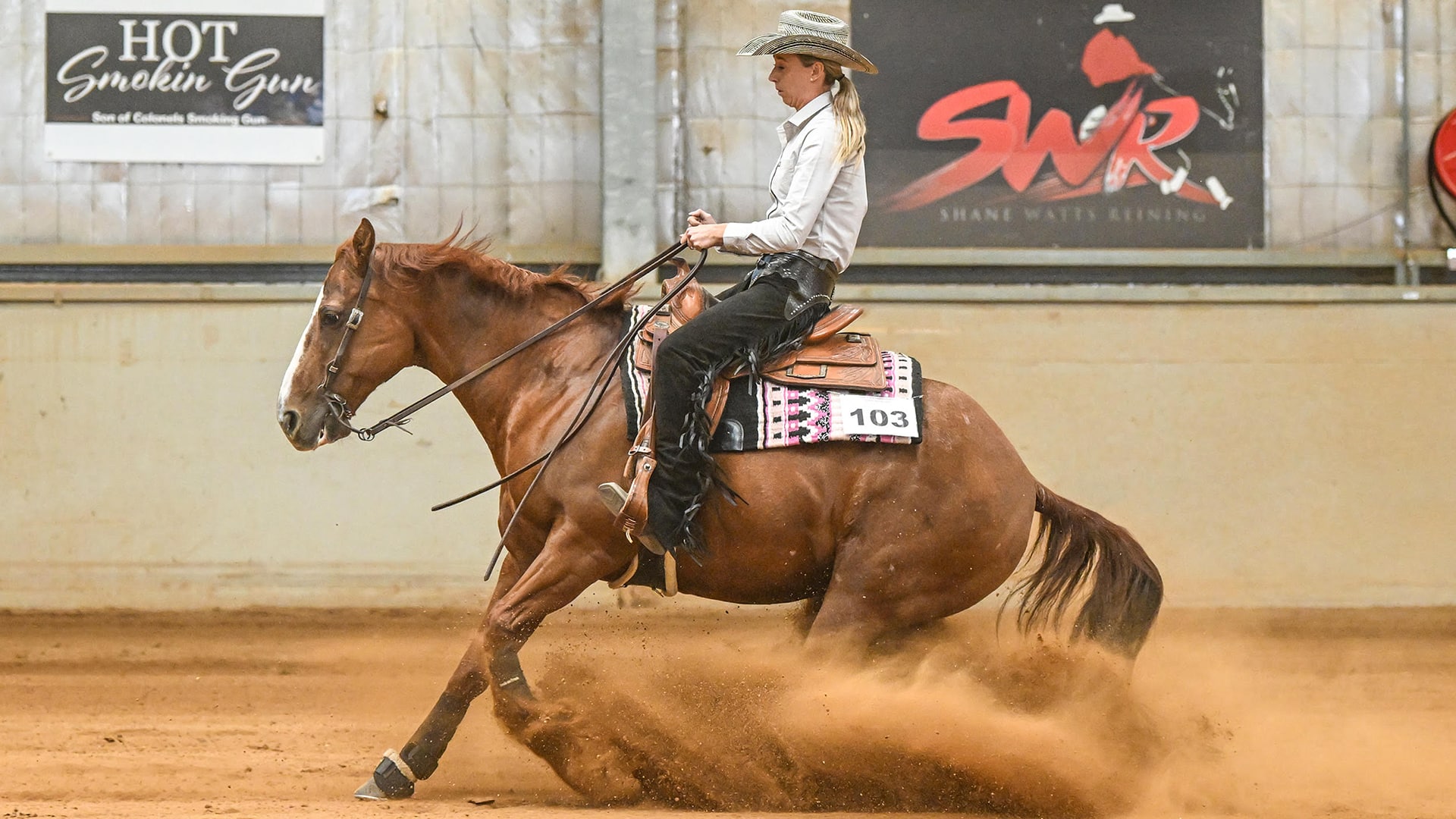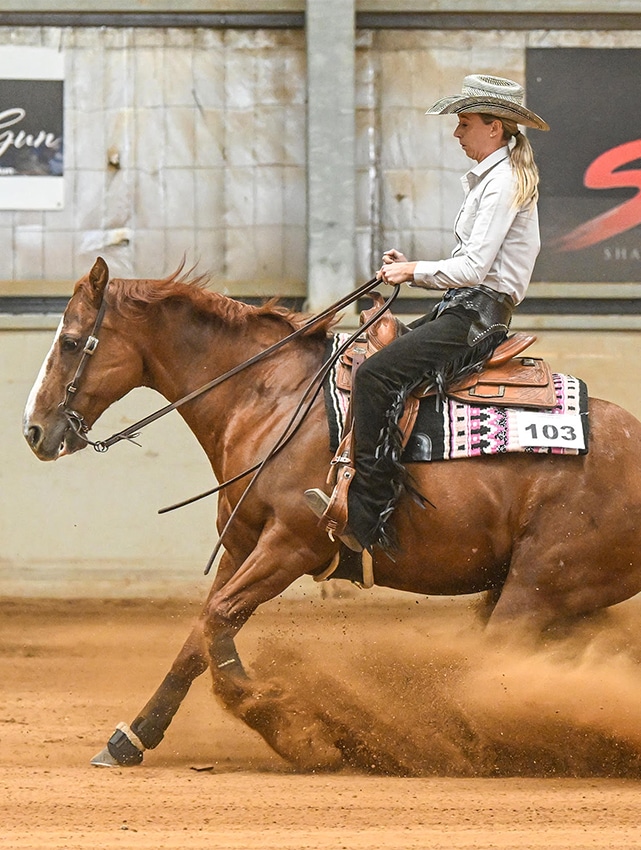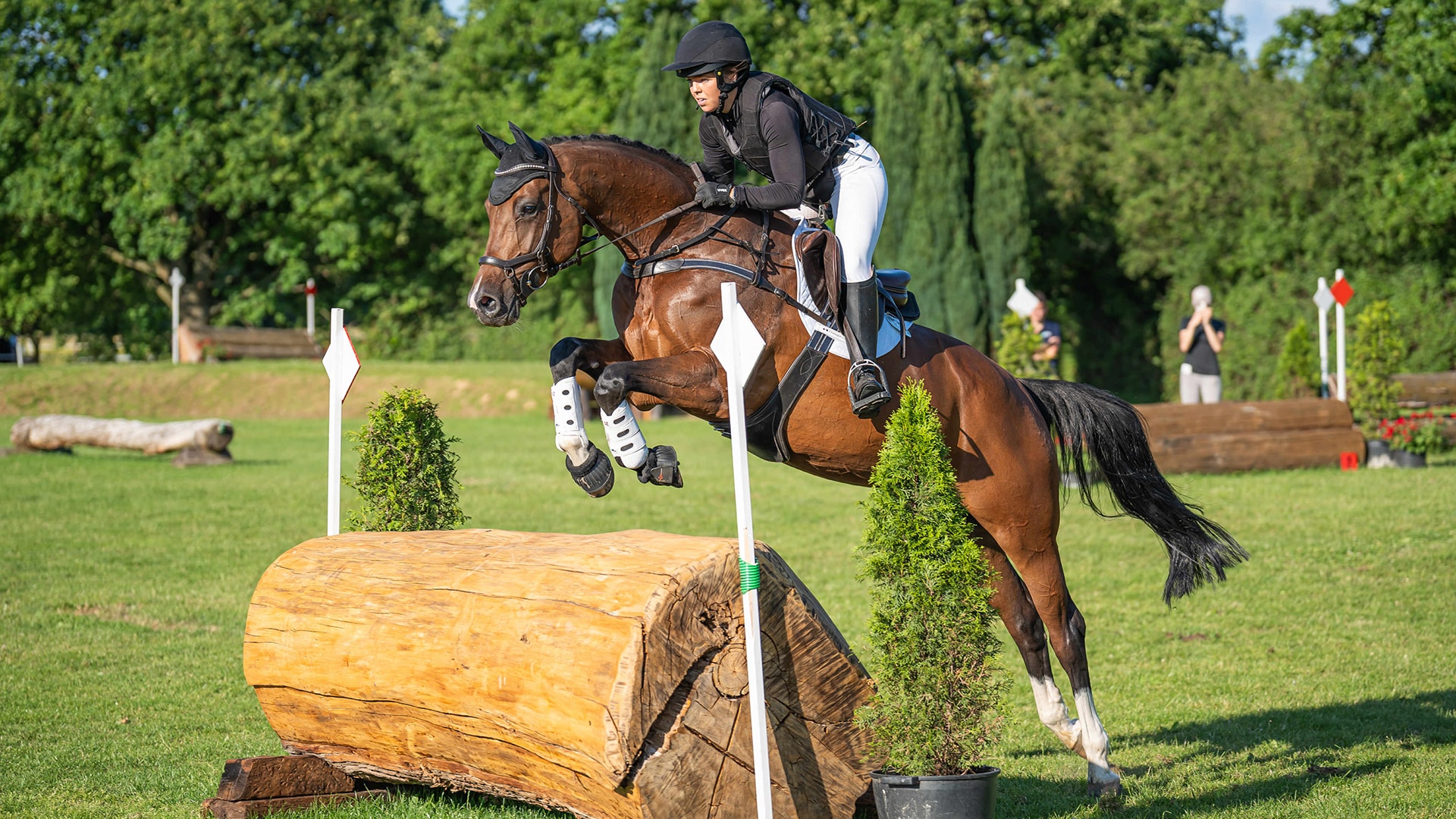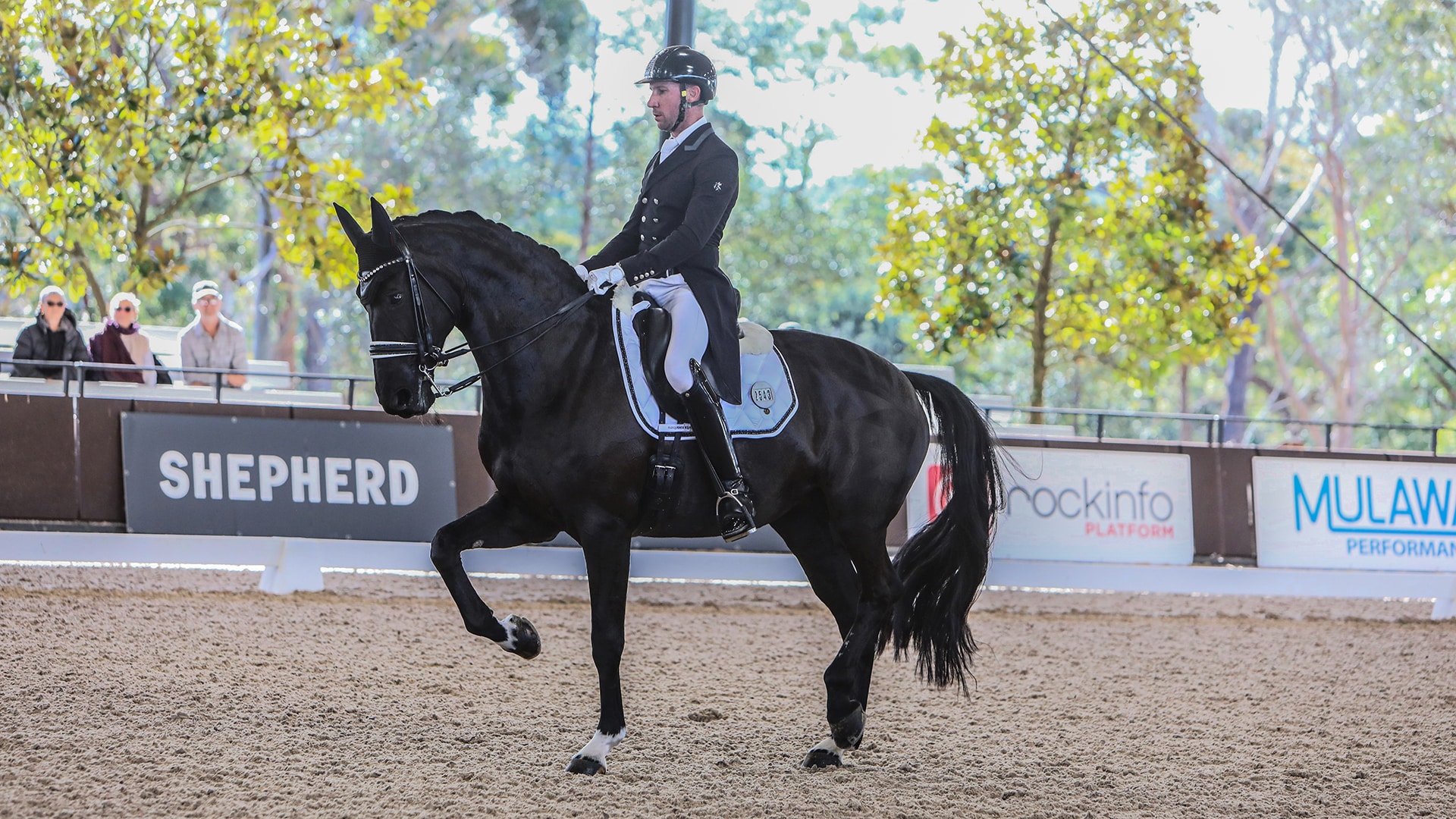At first glance, classical dressage and the high-speed, dust-kicking excitement of reining or ranch classes might seem like two completely different worlds. But for Grand Prix dressage riders Shanon McKimmie and Stephanie McDonald, branching out into Western disciplines hasn’t just been a fun experiment — it’s transformed how they train, ride, and think about horsemanship.
Both women have horses still competing in dressage, but over the past few years, they’ve stepped into the Western arena with enthusiasm — and serious results to match. Their journeys highlight just how much can be gained from crossing disciplines, and how core horsemanship skills translate across even the most contrasting styles.
A SPARK LIT BY SLIDING STOPS
For Shanon McKimmie, the seed was planted more than a decade ago. “I’ve always had a secret love for reining,” she admits, “but the moment that really stood out was Equitana 2012.” At the time, she was riding in the Kyra Kyrklund masterclass with her Under 25 Grand Prix horse Ambassi. After finishing for the day, she and a few other riders wandered backstage, drawn by music and crowd noise.
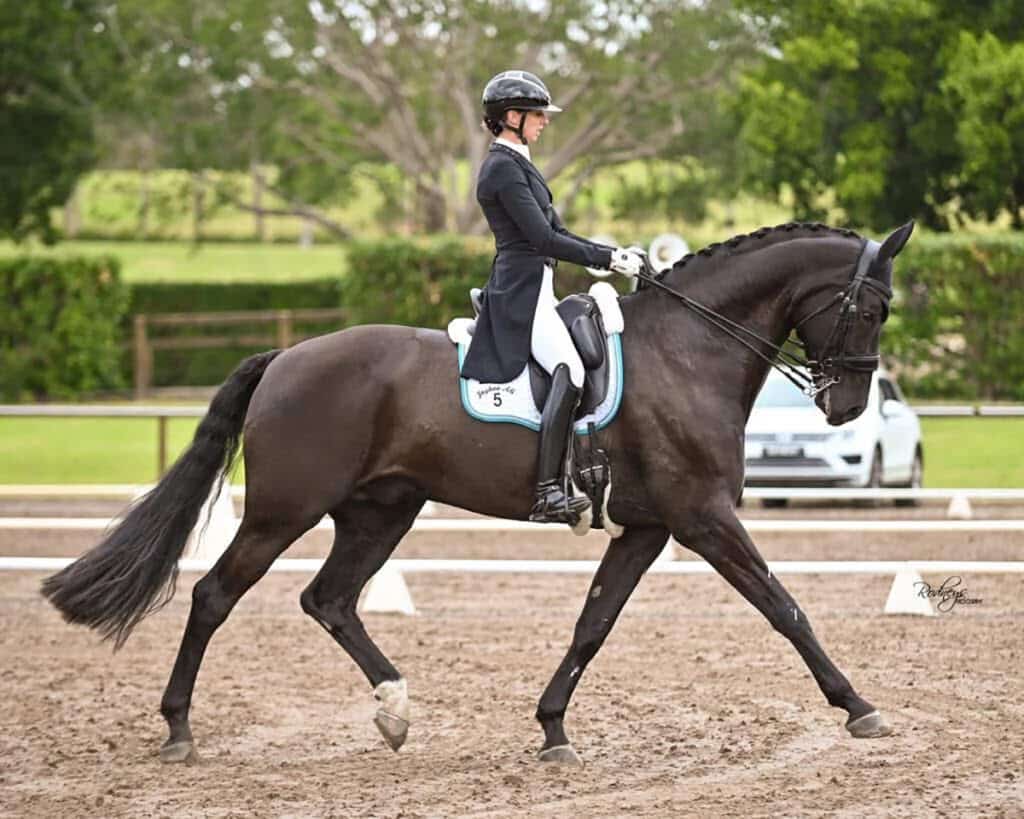
Shanon McKimmie and Warmblood Jaybee Ali. Image by Rodneys Photography.
“We discovered it was reining. The atmosphere was electric — the riders galloping through the black curtain straight into a massive sliding stop, the horses completely focused on their rider, totally unfazed by the crowd. I knew I wanted to feel that feeling one day.”
That feeling has become a new reality. Now a full-blown reining competitor, Shanon is riding in the professional ranks due to her dressage career — no easy feat for a newcomer. But in her first year of competition, she’s already earned multiple state and national placings, including the 2024 Oceania Reserve Champion title in Intermediate Open, and multiple Rookie Pro champion titles.
DRAWN TO THE WESTERN LIFESTYLE
Steph McDonald’s path was a bit different — rooted more in curiosity and lifestyle than a single moment. “The relaxed nature and versatility of the Quarter Horse really appealed to me,” she says. “And I love that there are so many different events on offer. You can tailor the competition and training to suit your horse’s strengths, which keeps everything dynamic and interesting.”
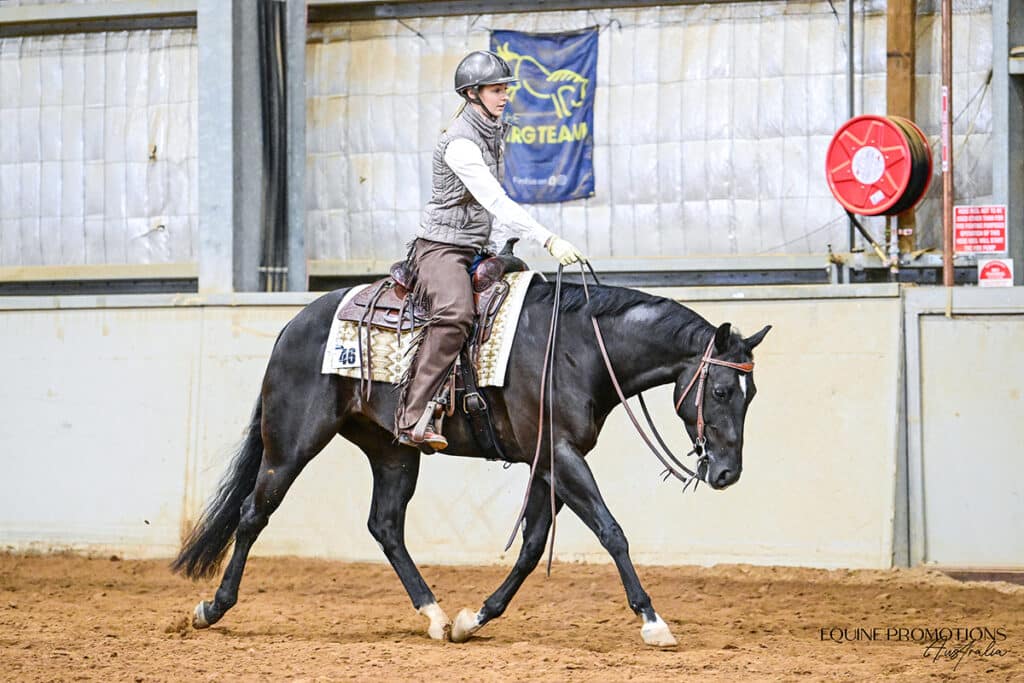
Steph and Quarter Horse Fun Time Rock. Image by Equine Promotions Australia.
Stephanie now competes in Ranch Versatility, a multi-phase event where riders perform in reining, rail work, trail obstacles, and conformation. “It’s a big day,” she laughs. “You might be riding for hours across five classes — it’s physically and mentally demanding, but I love the variety.”
THE AIDS FEEL BACKWARDS
Transitioning from one discipline to another, especially at a professional level, always comes with challenges — and both riders have had to rewire their muscle memory in unexpected ways.
For Steph, even basic things like the rein-back felt completely foreign. “In dressage, you put your lower leg back behind the girth. In Western, you push your feet forward toward the shoulders — it felt so backwards at first!” She also had to adjust to the terminology. “Movements like ‘scoring’ sound unfamiliar but are very similar to travers. Every trainer I’ve worked with has had a different approach, so it’s been about experimenting and finding what works.”
For Shanon, the biggest challenge was adjusting to the degree of trust required — and the loose contact. “You’re riding one-handed on a draped rein, going full speed, and you expect the horse to stop from a voice cue. That took some getting used to,” she says. “But it’s amazing how tuned-in they are. Sometimes I joke that I wish my dressage horses were half as ‘on the aids’ as my reiners!”
Despite the contrast in contact and style, Shanon has found plenty of overlap. “Self-carriage, engagement, balance — the fundamentals are the same.”
TRADING WARMBLOODS FOR QUARTER HORSES
While Quarter Horses are known for their explosive speed over short distances, both riders have discovered that, with the right conditioning, they can also offer surprising stamina — a valuable asset in multi-phase events like Ranch Versatility or during long show days with multiple reining runs.
One of the most striking changes has been the horses themselves. Both women have gone from big, powerful Warmbloods bred for the arena to compact, muscular Quarter Horses designed for agility, stamina, and resilience.
Shanon laughs when she talks about her “reining ponies” — all between 14.2 and 14.3hh. “That’s completely normal for the breed! But they’re incredibly level-headed, and they never say no. Quarter Horses are bred to be work horses — they thrive on having a job.”
Steph has found similar benefits. “The Quarter Horses recover from tense moments more easily. They’re generally quieter and more straightforward — and that’s a nice change when you’re used to managing highly sensitive, reactive Warmbloods.”
NEW DISCIPLINES, SHARED FOUNDATIONS
Far from being a distraction or departure from dressage, their Western riding has actually enhanced their dressage work. “I use lateral movements and suppleness training from dressage in my reining horses,” says Steph. “And for the Warmbloods, I’ve brought over some Western principles like patience and obedience. For example, expecting them to stand quietly while tied or under saddle for long periods — that’s just part of life for a Quarter Horse.”
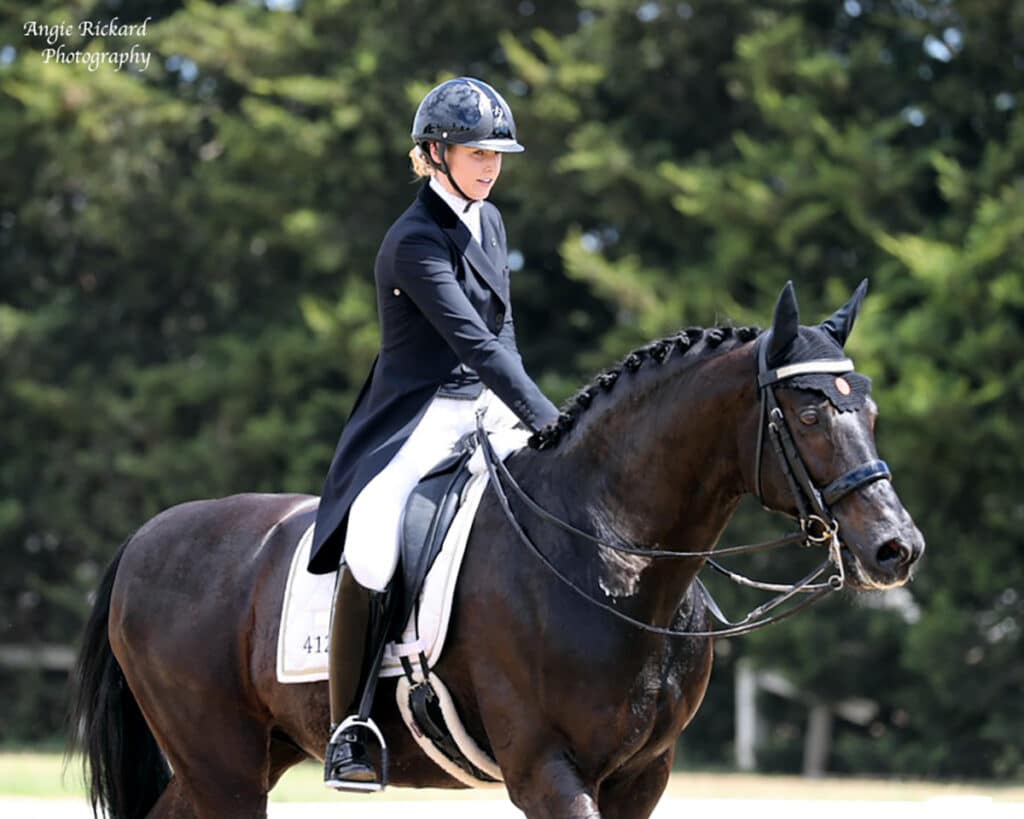
Steph and Warmblood Che De Jeu. Image by Angie Rickard Photography.
Shanon echoes the sentiment. “My reiners can do tempi changes, pirouettes, half pass — but my dressage horses definitely can’t do spins or sliding stops! Still, I do a lot of neck reining with my young dressage horses to improve their steering and balance.”
RETHINKING ROUTINES AND MANAGEMENT
From saddles and tack to feeding and fitness, daily management looks different in the Western world. “I still can’t get used to riding in jeans,” Shanon shares, “and the culture of not wearing helmets was a big adjustment for me.”
Even the saddles required adaptation. “Western saddles have no narrow twist — it’s a totally different seat.”
Quarter Horses also tend to be low-maintenance — but that doesn’t mean they don’t require conditioning. “They can compete in multiple classes in a single day,” explains Shanon, “so they need serious endurance and fitness.” Feeding can be a challenge too, as they’re easy keepers. “Mine only get lucerne hay — no filler grass hay — and they do well on high-quality, low-GI hard feed.”
Stephanie’s horse lives barefoot, wears no paddock boots, and thrives on simple rations. “They’re a lot less fussy than Warmbloods,” she says. “And they handle changes in environment or schedule far better.”
LESSONS FOR THE DRESSAGE WORLD
With one foot in each world, both riders have gained a unique perspective on what dressage can learn from Western disciplines.
For Shanon, it’s the culture. “Reining people are so encouraging. When someone has a good run, everyone cheers. Professionals help other professionals. That sense of camaraderie — I hadn’t really experienced that to the same extent in dressage.”
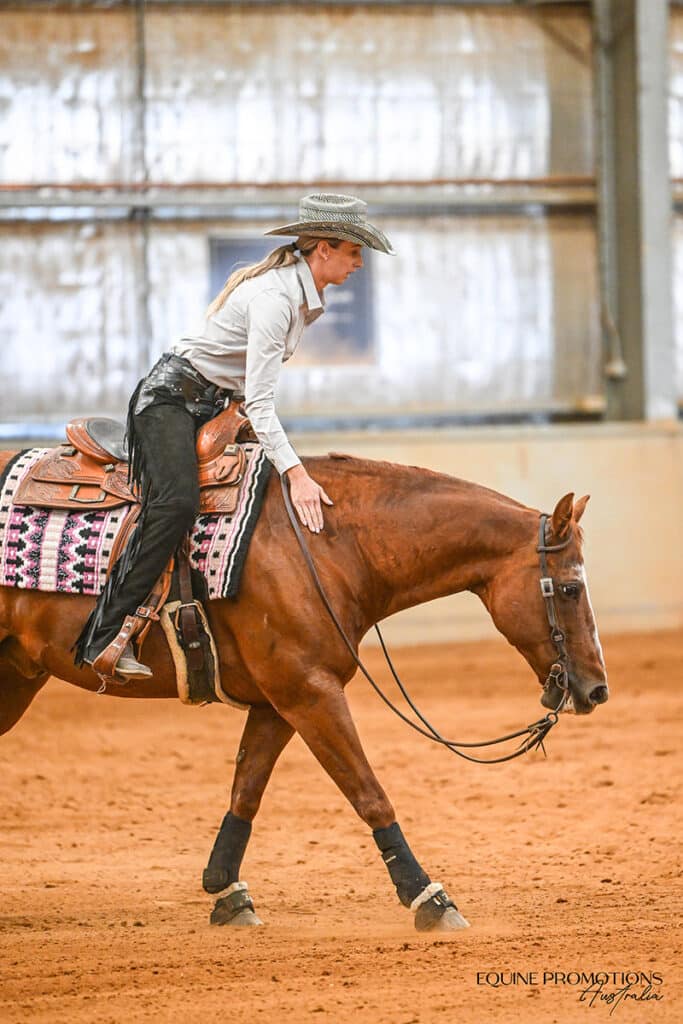
Shanon and Predator. Image by Equine Promotions Australia.
“When someone
has a good run,
everyone cheers.”
She also notes the cost difference. “Reining is so much more affordable — memberships, entries, even lessons — and there’s actual prize money on offer!”
Stephanie believes Western training can help dressage riders find more feel. “There’s a real focus on seat and voice cues, letting go of the reins, and letting the horse find its own flow and self-carriage. In dressage, it’s easy to fall into the trap of trying to fix things with your hands.”
Ultimately, both riders believe that good horsemanship transcends any one discipline.
“Fundamentals are everything,” says Stephanie. “Whether it’s reining, ranch classes, or dressage, you need patience, clarity, and a good foundation. Exploring another discipline won’t take away from what you know — it’ll make you better.” EQ
